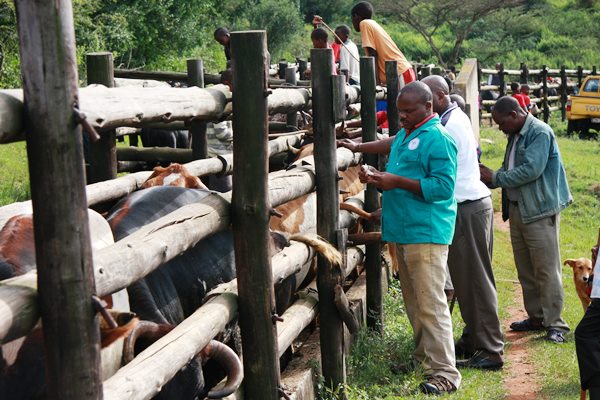JANUARY
1. De-worm all stock above six months against liver-fluke, in problem areas.
2. De-worm against roundworms, on badly affected properties.
3. Pay attention to fly control.
4. Weekly dipping to control ticks, particularly brown ear tick adults.
5. Dipping may be reduced if cattle have been vaccinated against tick borne diseases.
6. Tick borne diseases are a menace at this time, particularly theileriosis (January disease).
7. Cattle to be on phosphate/salt supplementation.
FEBRUARY
1. Vaccinate weaners and yearling against contagious abortion and blackleg.
2. Booster vaccinate yearling against blackleg, at 18 months of age.
3. Continue fly control.
4. Tick control paying particular attention to brown ear ticks.
5. Tick borne diseases are a major menace as well as lumpy skin disease, rift valley fever, blue-tongue and other vector borne diseases.
6. Provide cattle with phosphate/salt supplement.
MARCH
1. Vaccinate young stock (18 months of age) against blackleg.
2. Continue fly control in problem areas.
APRIL
1. Deworm all young stock and adults against roundworm.
2. Begin protein supplementation and start using crop residues e.g. groundnut hay.
MAY
1. Continue with activities as in April.
2. Reduce dipping frequency (fortnightly to monthly) depending on tick challenge.
JUNE
1.Vaccinate against tick borne diseases (theileriosis, red water, gall sickness, heartwater).
2. Consult your Government vet on the use of these vaccines in your area. (animals can be vaccinated using the vaccines from May to October as long as they are above three months of age).
3. Protein supplementation and usage of crop residues.
JULY
1. Implement livestock identification trust tagging for calves.
2. Control brown ear tick nymphs which become active until September.
3. Protein and phosphate supplementation and usage of crop residues.
AUGUST
1. Vaccinate breeding bulls against vibriosis and leptospirosis.
2. Protein and phosphate supplementation and usage of crop residues.
SEPTEMBER
1. Dehorn calves at one month of age
2. Vaccinate cows and heifers against vibriosis and leptospirosis
3. Continue protein and phosphate supplementation
4. Plant toxicity is expected at this time of the year, take precautionary measures e.g. over grazed pastures are a great risk for plant toxicity.
5. Beware of calf scours in newly born calves (birth to three months).
OCTOBER
1. Castrate calves using burdizzo at three months or surgical at one month.
2. Vaccinate against vector borne diseases e.g. lumpy skin, rift valley fever, stiff sickness, blue tongue.
3. Deworm all stock above six months against liverfluke, paramphistomes and roundworms.
4. Continue protein supplementation.
5. Watch out for bont legged and red legged ticks under the tail.
6. Plant toxicity is expected at this time of the year, take precautionary measures.
NOVEMBER
1. Remove protein supplementation and replace it with phosphate/salt supplementation in summer.
2. Fly control in problem areas.
DECEMBER
1. Ticks and tickborne diseases are on the increase, intensify tick control (increase dipping to weekly, depending on challenge).
2. Fly control in problem areas.
3. Phosphate/salt supplementation.
-Compiled from various agriculture sources
Disclaimer: The calendar should be used as a guide and should be amended as veld condition and vegetation changes. Always consult your local vet when in doubt.


